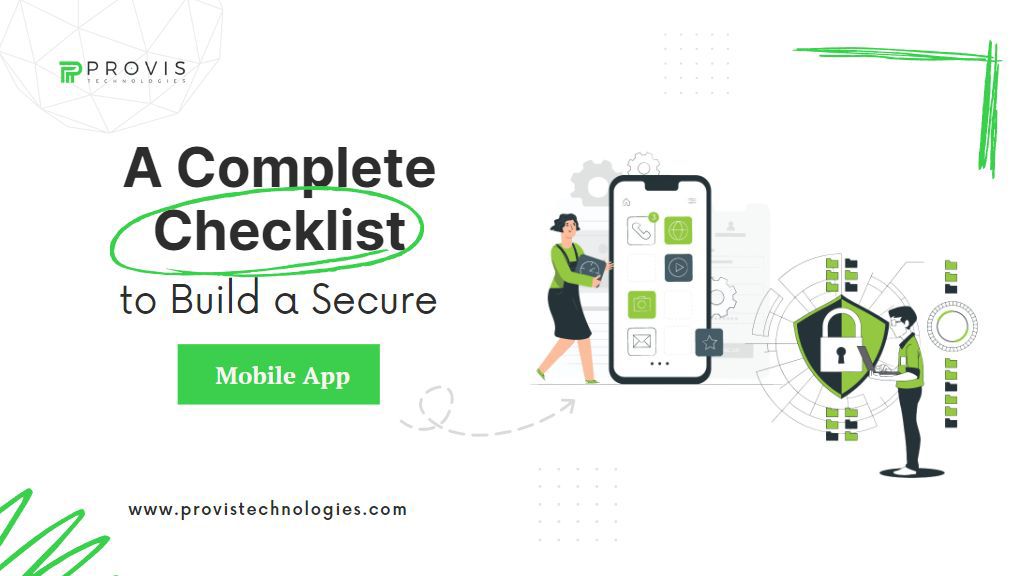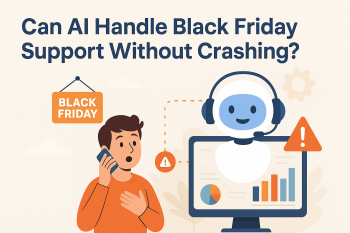Today, it’s hard to imagine our lives without mobile apps. One thing or the other is done by using them. They have completely revolutionized our shopping cultures, banking habits, and socialization practices. But with the convenience of mobile apps comes the responsibility of ensuring they are secure. A secure mobile app protects user data and forms credibility. Here’s a complete checklist to build a secure mobile app to succeed in your development business.
Secure Code Formation
The foundation of any secure mobile app is its code. Your app’s code is the first line of defense against cyber threats. We suggest you follow the below practices for a secure code formation.
Write Clean & Efficient Code
Start by writing clean and easily understandable code. Please avoid using unnecessary code that might open up vulnerabilities. These things matter the most, especially when you have a heap of codes.
Minimize Third-Party Libraries
While third-party libraries can save time, they can also introduce security risks. Use them less, and be sure they are from trusted sources.
Obfuscate Code
Thinking about Code obfuscation? It is something that is a nightmare for the app attackers. It reverse-engineers your app’s code. This adds an extra layer of protection by making the code harder to understand.
Regularly Update Code
Cyber threats are evolving – so it’s crucial to regularly update your code to address new vulnerabilities. These mobile app security best practices & tips can help you a lot in securing your app.
Read Worthy: – Top 10 Tips to Reduce App Development Costs
Execute Strong Authentication
You know authentication, right? It verifies the identity of a user. Weak authentication methods can leave your app vulnerable to attacks. Look below to learn how you can strengthen your app’s authentication.
Use Multi-Factor Authentication (MFA)
MFA requires users to provide two or more verification factors to gain access. This is what they say about MFA – something they know (password), something they have (a mobile device), or something they are (fingerprint).
Strict Password Policies
Require users to create strong passwords with letters, numbers, and special characters. Discourage the use of common passwords. This is a mobile app security checklist one of the most common yet dangerous vulnerabilities.
Session Management
Put secure session management active to prevent session hijacking. Set session timeouts and use secure tokens to authenticate user sessions.
Don’t Miss: – Android vs iOS Which is the Best Platform for App Development?
Encrypt All Data
Encryption is a critical aspect of the mobile app security checklist. What it does is that even if data is intercepted, it cannot be read or tampered with. Here’s what you need to do:
Encrypt Sensitive Data
Encrypt all sensitive data, both at rest & in transit. It has to do with personal information, login credentials, and financial data.
Use Strong Encryption Protocols
Be sure you use robust encryption protocols such as AES (Advanced Encryption Standard) to protect data.
Secure Communication Channels
Use secure communication channels like HTTPS to encrypt data in transit and prevent man-in-the-middle attacks.
Also Read: – Why Your Business Needs a Mobile App Trends & Statistics
Secure Backend Servers
Your app’s backend servers are just as important as the app itself when it comes to mobile app security. If your servers are compromised, your entire app could be at risk. This is how to secure your backend:
Use API Security
Secure your APIs with tight authentication and encryption methods. Use tokens for API authentication and limit API access based on user roles.
Regular Security Audits
Conduct regular security audits on your servers to identify and fix vulnerabilities. You can use automated tools to scan for potential threats. This works!
Keep Servers Updated
Be sure your backend servers are always running the latest software versions and security patches. Attackers can easily target outdated software. That’s a piece of cake. You know the moral, right?
Use Secure Data Storage
You must store user data securely to protect it from unauthorized access. That’s how you handle data storage securely:
Avoid Storing Sensitive Data Locally
Avoid storing sensitive data like passwords and credit card information on the device. If necessary, you can use secure storage options provided by the operating system, such as Android’s Keystore or iOS’s Keychain.
Encrypt Stored Data
If you must store sensitive data, ensure it’s encrypted. This way, even if the device is compromised, the data remains protected.
Must Check: – Creating Mobile Web Apps the Right Way Advice & Methods
Enforce Data Access Controls
Restrict access to stored data to only those components of your app that absolutely need it. The risk of data exposure decreases.
Test Your App Regularly
As you know, testing is critical for building a secure mobile app. Regular testing helps identify vulnerabilities before they can be exploited. Here’s how to approach testing:
Conduct Penetration Testing
You can do penetration testing to check how real-world attacks work on your app. This helps you identify and fix security gaps.
Use Automated Security Tools
Integrate automated security testing tools into your mobile app development process. These tools can continuously scan your app for vulnerabilities.
Perform Code Reviews
Regularly review your code for security flaws. You know what? Peer reviews catch even those issues that tools can’t. So, do it!
Test for Platform-Specific Vulnerabilities
Different platforms (iOS & Android) have their own security challenges. You must test your app for vulnerabilities specific to each platform. Keep your application security checklist in check.
Secure Third-Party Integrations
Many mobile apps rely on third-party services & integrations, such as payment gateways, social media logins, and analytics tools. While these services add functionality, they can also introduce security risks. Read the below points to learn how to manage third-party integrations securely.
Choose Trusted Providers
Only integrate with third-party services that have a strong reputation for security. Research their security practices and read reviews from other developers.
Review Permissions
Limit the permissions you grant to third-party services. Only allow access to the data and functionality they need to operate.
Monitor & Audit Integrations
Regularly monitor third-party integrations for unusual activity. Conduct audits to ensure they continue to meet your security standards.
Today, AI integration services are becoming increasingly popular. So, if you get AI services, be sure to get them from reputed AI service providers like Provis Technologies.
Secure App Distribution
How you distribute your app can impact its security. If the distribution process isn’t secure, your app could be tampered with before it reaches users.
Use Official App Stores
Distribute your app through official stores like Google Play and Apple’s App Store. These platforms have security measures to prevent malicious apps from reaching users.
Sign Your App
Use a code-signing certificate to sign your app before distribution. This helps verify the authenticity of your app and ensures it hasn’t been tampered with.
Provide Clear Updates
When releasing updates, clearly communicate what’s new to your users. This helps them trust that the update is legitimate and not a potential security threat.
Educate Your Users
No matter how secure your app is, users can still be the weakest link if they are not educated about security. This is how you can tell your users about how they can protect themselves online.
Provide Security Best Practices
Include security best practices in your app’s onboarding process. Teach users how to create strong passwords, recognize phishing attempts, and keep their devices secure.
Encourage Regular Updates
Encourage users to regularly update your app. Updates are important because they have security patches that keep new threats at bay.
Offer Two-Factor Authentication
Where possible, offer two-factor authentication as an option for users. This adds an extra layer of security to their accounts.
Know Security Trends
The world of cybersecurity is constantly changing, with new threats coming up all the time. Staying informed about the latest security trends is essential to keeping your app secure.
Follow Security Blogs & News
Regularly read blogs, news sites, and forums focused on mobile app security. This will help you stay informed about new vulnerabilities & best practices.
Attend Security Conferences
Consider attending security conferences & webinars. These events are great opportunities to learn from experts and network with other developers.
Join Developer Communities
Participate in online communities where developers share security tips and experiences. Platforms like GitHub, Stack Overflow, and Reddit can be valuable resources.
Bottom Line
You can definitely build a secure mobile app – all it takes is planning & monitoring. Follow the above mobile app security checklist to reduce the risk of security breaches. Remember, security is not a one-time task but a continuous effort that evolves with new threats & technologies. Prioritize security from the start and build a mobile app that users can trust. Also, if you need any help, support, or development – connect with Provis Technologies.
Provis Technologies is the one-stop solution for all your IT development and AI integration services requirements.
FAQs
Why is mobile app security so important?
Users trust your app and share their personal information like contacts, emails, and bank accounts, too. We are sure you don’t want to put this information at risk, do you?
What is 2FA in mobile security?
2FA is Two-Factor Authentication. It is basically an extra security layer. You must have noticed that on some apps – after entering your password, an OTP is also sent to you to get access. That’s 2FA!
What are AI integration services?
AI integration services are when you integrate AI into your work model. AI is trending these days because of its benefits.
What if I need help with mobile app security?
Simple, connect with Provis Technologies.
Written By
Author's Picks
- A Complete Guide to Pharmacy Management Software Development
- 09/09/2024
- Software Development Vs Application Development: Key Differences and Similarities
- 08/09/2024
- How to Choose a Mobile App Development Framework: A Beginner’s Guide
- 26/08/2024
Categories
- AI for Startups
- AI in Web Development
- AI Integration
- AI Platforms
- AI Prompt
- AI Tools
- AI Trading Software
- Android App
- Android vs iOS Development
- Angular
- API
- API Development
- App
- app development
- App Idea
- App User Feedback
- Application
- Artificial Intelligence
- Audit Services
- Automotive Industry
- Awards and Recognition
- Business Consulting
- Business Website
- Chatbots
- CRM
- CRM for Financial Advisors
- Custom CRM
- Custom SaaS
- Custom Website
- Customer Service
- dashboard design
- Developing a Mobile App
- Digital Business
- E-commerce
- EMR Integration
- Finance
- Financial Advisors
- Financial Advisors
- GIT
- Health Insurance
- iOS App
- iOS App Development
- IoT Mobile App Development
- IoT Platforms
- IT Audit Services
- IT Consulting
- IT Strategies
- Java Development
- Laravel
- Lean Canvas
- Learning Management System
- Logistics Apps
- Mobile App Development
- MVP
- Native App
- News Aggregator Site
- OTT
- Outsourcing IT
- Payment Gateway
- predictive analysis
- Product Launch Strategy
- Progressive Web App (PWA)
- Prototype
- Recommender Systems
- Ruby
- SaaS
- SaaS Application
- SaaS Business
- SaaS Company
- SaaS Development
- SaaS Product
- SaaS Project
- Sales Funnel
- SEO
- Shopping Cart
- Software Development
- SSL and TLS
- Startup Checklist
- Technology
- Tetradic Color Scheme
- UI/UX Design Company
- Unit Testing
- User Flow
- User Testing
- Web Development
- Web Performance Optimization
- website Maintenance Services
- Website Migration Service
- Website Speed Optimization
- WooCommerce
- WordPress





